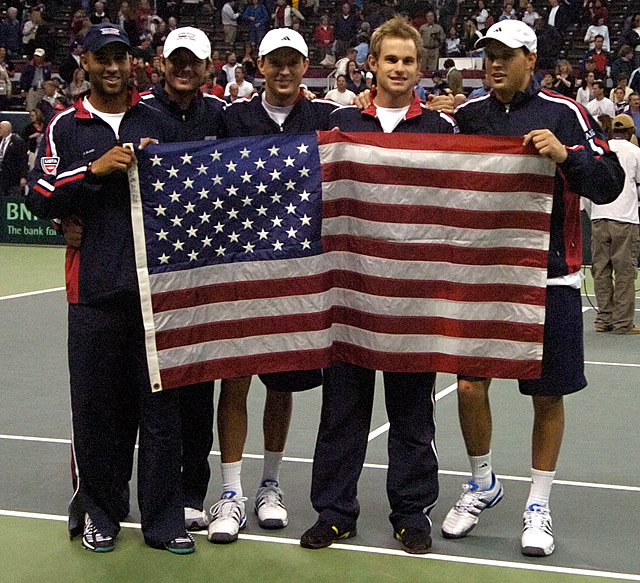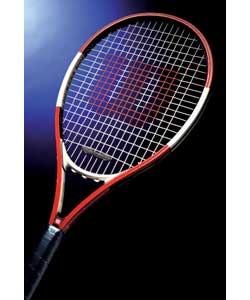
Back in August, tennis was hit with one of its biggest controversies yet – betting and match fixing. Gambling is obviously present in all sports – Fantasy Football, college March Madness, horseracing, boxing, the list goes on and on. However, betting issues have never really been discussed too much in tennis. In fact, I didn’t even know how BIG betting was in the sport. Take a guess at HOW BIG betting is?? How about $1 billion big!?
According to SI.com, $1 billion was bet for the US Open alone. When dealing with that ridiculously large amount of money, I understand why even the slightest suspicion of a player fixing their match in return for some money has become such a big deal and whipped tennis into the scandal spotlight.
So, what has been going on with the betting scandal? Let’s look at Nikolay Davydenko. Never heard of him? Well, he is actually sitting at #4 in the world. Davydenko is known for playing A LOT. He enters many of the tournaments that the big names opt out of and, since he has moved up in the rankings, he is usually the highest seed – hence receiving an easier draw. So, he tends to do very well, thus gathering ranking points. Sounds like a great strategy.
Back in August in a Poland tournament, Davydenko was playing in his second round match against Martin Vassallo-Argullo, #87 in the world. The match seemed to be a routine day at the office, as Davydenko won the first set 6-2. Immediately after this easy set, activity started to get fishy on Betfair.com, a British online gambling site. Bettors rushed to bet over $7 million dollars that Davydenko would lose the match – 10 times the amount that is routinely betted for a tennis match. However, all of this “mysterious betting” occurred AFTER Davydenko won that first set. Hmmmm… was it ironic then that Davydenko ended up losing the second set and then retiring from the match, citing a foot injury? Yes, after that first almost-flawless first set, the betting amounts skyrocketed with wagers of Davydenko losing…and Davydenko forfeited the match…and lost.
According to ESPN, Betfair “detected the unusual action during the match through its 40-man fraud team” and canceled all of the bets for that match. The company has never done that before in its seven years of operation.
"The evidence was so compelling," said Robin Marks, Betfair's head of media. "With the money coming in at the end of the first set and the sheer volume of the money, it was clear something was wrong. We notified the ATP during the match and told them we were unhappy."
Since then, the credibility and integrity of the ATP, the athletes, and the sport of tennis have been under much scrutiny. The ATP has decided to meet with Davydenko and betting companies in late October to discuss the issue and decide if there has indeed been illegal fixing of matches between bettors and players. If a player is found guilty, they could face a $100,000 fine or have all of their price money withdrawn. They can also be suspended for an undisclosed period of time. No player has ever been suspended from play due to illegal gambling activity. Davydenko is cooperating with the media and trying to keep his game face active. But, it will not be up to him to decide his fate.
The ATP and anti-gambling groups are now teaming up to prevent this activity from escalating and are even warning athletes of the dangers of the practice. Meetings with coaches have occurred and signs are posted in locker rooms that prohibit the activity. Some big tournaments are even using surveillance cameras in the locker rooms. While some may say that this is beginning to take away the privacy of some of the athletes, I disagree. Take a look at how common illegal match fixing has actually become and you may feel differently…Kind of scary if you ask me.
Since Davydenko’s incident, numerous players have come out and said that, upon many occasions, they have been approached by bettors. During much of the time, players are asked to lose, as Davydenko is being looked upon to have done. On Bookmakers Review, a betting information website, the site quotes numerous players who have been faced with the option to fix a match. Click on some of the old posts. It is very interesting.
Even the big names are faced with this controversy. Bob Bryan, half of the Grand Slam-winning doubles duo known as the Bryan Brothers, has stated that match fixing is definitely an option for everyone:
“There have been anonymous calls to players' rooms with some monetary offerings -- I know that," the U.S. doubles champion told the Los Angeles Times. "And I know every player I've talked to has turned it down."
Even one of my favorite players, #3 Novak Djokovic, and Top 20 player Dmitry Tursonov have been asked to lose a match in return for a fat check. I cannot believe how prevalent this is and it shocks me that some less successful players might actually be going along with it.
Tennis is obviously one of the most individual sports out there. Most importantly, there is no on-court coaching – players are on their own and have to make the necessary tactical adjustments themselves and play their own mental game. Therefore, I can see how easy it would be to fix a match. Any player can say that they are hurt and have to retire. Some can easily shank a few forehands into the seats by “accident” to eventually lose a match, citing a “bad day on the court.” Especially for those players who do not earn large paychecks each week, it can be very easy to intentionally lose a match and receive more money that one would in a following round.
However, players need to keep in mind that they are talented and have worked so hard to achieve excellence in such a grueling sport. Fixing a match should be unthinkable and is more than unfair for the opponent, the sport, and most importantly, the fans.
I hope this situation gets sorted out and those who have stupidly involved themselves in match fixing are punished. Tennis does not need this negative publicity, as the sport is still trying to gain a larger following. Tennis is classy and fair and does not deserve to have such a sick controversy in its presence. It will be interesting to see how the meetings with Davydenko go, and I will definitely be keeping information up-to-date as it unfolds.
 Also, kind of like déjà vu, Davydenko lost in Paris, too. The scores were very one-sided as Marcos Baghdatis won 6-2, 6-2. I am sure you know what is coming next. Was it fixed with bettors? The chair umpire thought so again. Look at what the ump said this time:
Also, kind of like déjà vu, Davydenko lost in Paris, too. The scores were very one-sided as Marcos Baghdatis won 6-2, 6-2. I am sure you know what is coming next. Was it fixed with bettors? The chair umpire thought so again. Look at what the ump said this time: ey will put into fighting it. Now that she is not playing the game anymore, it might not be that big of a deal. It will still be important to clear her name, but she will not be in competition with possible illegal drugs in her system and the media pounding her after each match.
ey will put into fighting it. Now that she is not playing the game anymore, it might not be that big of a deal. It will still be important to clear her name, but she will not be in competition with possible illegal drugs in her system and the media pounding her after each match.















 As well as being a huge tennis and sports fan, I am also a big pop culture junkie. People magazine comes in my mailbox every week and I am constantly visitin
As well as being a huge tennis and sports fan, I am also a big pop culture junkie. People magazine comes in my mailbox every week and I am constantly visitin

 The lesson here: Sports figures need to remember that they have a purpose as a professional athlete. They have a duty to compete and to drive themselves or their team to higher success. Putting more attention on oneself through something other than raw athleticism and passion is not the best way to demonstrate that. I am not saying that appearance is not important (I even admit to wanting to look kind of flashy when I am playing), but when you take the attention away from the sole purpose of sport, simply through an outfit, it is not appropriate. This is especially true in a classy sport like tennis.
The lesson here: Sports figures need to remember that they have a purpose as a professional athlete. They have a duty to compete and to drive themselves or their team to higher success. Putting more attention on oneself through something other than raw athleticism and passion is not the best way to demonstrate that. I am not saying that appearance is not important (I even admit to wanting to look kind of flashy when I am playing), but when you take the attention away from the sole purpose of sport, simply through an outfit, it is not appropriate. This is especially true in a classy sport like tennis.